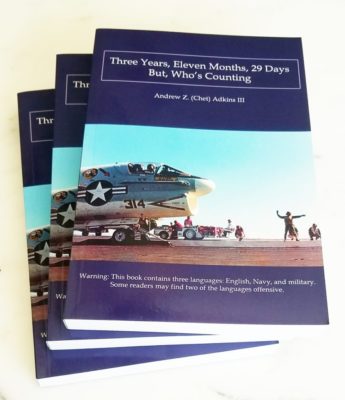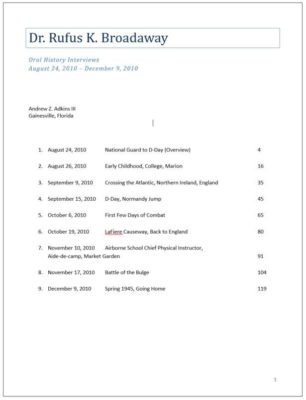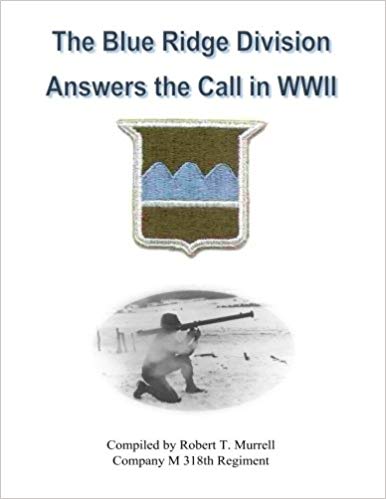Part 3 – Publishing Your Own Memoir
 In my past two posts, I blogged about (1) the reasons you may want to write your own memoir, as well as (2) how I asked the Navy to help me with my personal research. I also provided some simple tips and outlines to help you get started, as well as several writing prompts.
In my past two posts, I blogged about (1) the reasons you may want to write your own memoir, as well as (2) how I asked the Navy to help me with my personal research. I also provided some simple tips and outlines to help you get started, as well as several writing prompts.
In this week’s blog post—the final in this three-part series—I’ll provide several ideas on how to self-publish your memoir, should you choose to do so.
Step 1: Write
First, you have to write something… anything (that’s a given). I cannot stress the importance of passing along your legacy, your memories, and your stories to family and friends. Even if it’s just a short story or two. And, as I mentioned in the past, you don’t have to be a veteran to write a memoir. Think about your parents or your grandparents. They all have wonderful stories too, both growing up as well as experiences in their own lives. And if you have kids that want to help out, it’s also a great way for them to bond with their grandparents.
Second, realize that once you start writing, you may want to end it after the first story/chapter/section. That’s okay. You can always pick it up later. No one is forcing you to write this, so you’re your own boss.
Lord knows how many times I said to myself, “Self… Screw it! (or some other choice Navy term) I can’t do this right now.” But I’d pick it up a little while later and continue writing. Mine started out as a simple memoir, but morphed into a whole book, taking about a year from start to finish. I didn’t know that at the time when I started.
Third, once you’ve written something, what’s your next step? That is the real question that only you can answer.
Examples of Memoirs
Let me share with you some things I’ve learned over the past 20 years of working closely with veterans and their personal histories.
My dad (80th Infantry Division) kept a diary during the war—a day-to-day journal of his experiences during World War II. He started writing while he was laid up in a hospital for two months in England recovering from a wound. I wrote about this and my own WWII journey earlier.
After my dad passed away in 1989, I started working on his diary and eventually turned it into a book: You Can’t Get Much Closer Than This—Combat with Company H, 317th Infantry Regiment, 80th Division. It was published in October 2005 by Casemate Publishers, and the following month, November 2005, it was selected as the Book of the Month for the Military Book Club.
It’s now in its second printing. I never thought…
 My father-in-law, Dr. Rufus K. Broadaway, was an officer in the 82nd Airborne Division and dropped into Normandy early in the morning on June 6, 1944. He was involved in the bloody battle for the La Fiere Causeway, just a short distance from Ste. Mere-Eglise. And, for a while, he was the aide-de-camp to General James Gavin, commander of the 82nd Airborne.
My father-in-law, Dr. Rufus K. Broadaway, was an officer in the 82nd Airborne Division and dropped into Normandy early in the morning on June 6, 1944. He was involved in the bloody battle for the La Fiere Causeway, just a short distance from Ste. Mere-Eglise. And, for a while, he was the aide-de-camp to General James Gavin, commander of the 82nd Airborne.
Rufus wrote several stories, not only about his airborne days, but also about his days as a surgeon in Miami. I also had an opportunity to conduct an extensive oral history of his time before and during the war.
In my work with the 80th Infantry Division, I have read dozens of personal accounts by WWII veterans, many of which are available on the 80th Division website. Several memoirs eventually turned into books (www.80thdivision.com/books.html), most of which were written by the individual veterans’ kids (like me).
Journaling to Help Heal
Memoirs do not need to be published works. Most of the time, they are memories that are personal and kept within the family. I also know many WWII, Vietnam, and GWOT veterans who write primarily to “get it out of their minds,” to “put pen to paper,” or to “let go of the past.”
Whatever the reason, writing things down (often called journaling) can help you clear your mind. That’s what many psychologists recommend for their patients too.
It helps. It works. Journaling is not for everyone, but it is for anyone.
My point it this: if you have several pages, you can simply use your computer to print out copies, or you can take it to a copy/print shop (e.g., Kinko’s or OfficeMax). You may only want to share with family and friends. You may want to just send an email. Whatever works for you, it will be the right thing to do.
On the other hand, if you have a hundred pages or more (or less), maybe you might want to self-publish it using one of the many online “print-on-demand” services. That’s what I did. And that’s what I want to share with you now.
Self-Publishing Services
There are literally dozens of self-publishing platforms and services online, more than when I self-published a few years ago in 2014. Just google “self-publishing” to find a list. While there are many, the following are what I would consider the top five.
My disclaimers are: a) I googled these myself, but I was already aware of these, and b) I used CreateSpace to publish my Navy book and the six 80th Infantry Division books (written by Robert Murrell, past historian of the 80th Division). I recently ported them over to Kindle Direct Publishing.
- Kindle Direct Publishing (Amazon)
- iBooks (Apple)
- IngramSpark
- Smashwords
- BookBaby
It might be advisable to spend a little time researching these various services. While Amazon KDP holds the market share, the other self-publishing services may have more benefits that are closer to your own needs.
Book Publishing Templates
The two most common book template sizes are 8½” x 11” and 6” x 9”. I’ve used both, and let me tell you why.
For my own Navy book, I chose the 6” x 9” because IMO that’s the most common size paperback book. Most of the books I get from the library (both hardcover and paperback) are this size. It really works well for self-publishing.
For Bob Murrell’s 80th Infantry Division series of books, I chose the 8½” x 11” size because, well, that’s what Bob used. For many (many) years, Bob had his books copied and bound (plastic spine) to ship to customers. But copy prices went up and profits went down.
 A couple of years before Bob passed away, he allowed me to digitize his books and put them on Amazon KDP to print on demand. The primary reason was to keep the legacy and the memories alive and to not lose this valuable history. All proceeds for Bob’s books continue to go to the 80th Division Veterans Association.
A couple of years before Bob passed away, he allowed me to digitize his books and put them on Amazon KDP to print on demand. The primary reason was to keep the legacy and the memories alive and to not lose this valuable history. All proceeds for Bob’s books continue to go to the 80th Division Veterans Association.
Amazon CreateSpace (and the other self-publishing services) all have ready-made templates (Microsoft Word, PDF, etc.) in different sizes (e.g., 6”x9”, 8½”x11”) for you to simply download and use for your memoir. Whichever template size you choose, I don’t think you can go wrong.
Voila! You’re Almost There.
You can create your own book cover too. I used my own photos (or the public domain Navy PR photos) for my Navy book. Bob Murrell had already created the logos for the covers of his 80th Division books, so I simply used those that already existed.
There are tools to not only help you with the formatting and cover creation, but also to automatically review the uploaded book. There is a preview tool that lets you see how your book will print. These tools exist for color or black and white, for hardcover or paperback, and for electronic book readers.
And, if you want, you can name your price for your memoir.
A Quick Word About ISBNs
Keep in mind, when you use an application like Amazon KDP, they will require you to have an ISBN number. It’s free and can be assigned automatically, but the ISBN number is assigned to the publisher. That might be you (it was for my Navy book), or it could be for a service provider/consultant. That’s fine, nothing wrong with it. But it may limit you in the future should you want to publish it with a traditional publisher. If you want, you can purchase your own ISBN number.
Without going into details about ISBNs, here’s a link to an excellent short tutorial from Self-Publishing School about ISBNs and how to order your own. https://self-publishingschool.com/isbn/
It Really Is That Easy!
I’ll admit, I’m a computer guy and pretty comfortable with these types of tools. But if you need help, there are several self-help tutorials as well as a vast online community forum. And if you want someone to help you along the way, there are also consultants, both directly with Amazon as well as independent companies.
What About E-Book Formats?
If you want to make your book available electronically, there are several different formats. Of course, you can leave it in MS Word format or convert it to PDF format—that’s fairly easy, and I know a lot of people who do that. If you want to convert to an e-reader format, Amazon KDP has an online tool for that.
I’ve also used an application called Calibre, which I find very helpful. Using Calibre, I can convert my book into a number of different e-book formats. This is helpful when I want to share my book(s) with people that use a Kindle or Nook (or other e-readers).
What About The Costs?
If you self-publish and do the work yourself (write, edit, and upload to a self-publishing service), the cost is zero-nilch-null-zip; at least, it is on Amazon KDP.
The only costs for my Navy book were for the printed copies I ordered, both the proofs and the extra copies for family and friends. The cost was about $5 each (my book is 246 pages, black and white print, color covers). If you print your entire book in color, the costs will understandably be a bit higher.
And, to answer your next question, I do have photos in my Navy book, but I chose to print them in black and white to save money.
Yeah… I’ll use Amazon KDP again.
Writing Your Own Memoir – Step-by-Step
So with all that behind us, how do you write and publish your memoir? Here is Andy’s simple step-by-step instruction:
Organize your memoir into sections. For example (Navy): Boot Camp, “A” school, duty station(s). This is often called outlining your book.
Gather your letters, photos albums, and other memorabilia to help remember people, places, duty stations, and dates.
If you want to elaborate, provide further details for each section. For example, I wrote about what I did while on duty as well as what I did while off-duty. Well, at least those things that I felt I could publicly share [(wide grin)].
Write, edit, re-write, and then edit again. Give it some time—memories often trigger more memories, and you may find yourself wanting to include more.
Have someone else read what you wrote for two purposes: one, readability (this is how the story flows), and two, accuracy (you want to make sure the facts are correct).
Then find a way to publish or self-publish. There are several self-publishing avenues. I used Amazon CreateSpace, now known as Kindle Direct Publishing.
Order some copies and pass them along to your family, friends, and shipmates. You don’t know how much they will appreciate this gesture.
If I can inspire one or two of you to memorialize your journey, then my task has been successful.
Writing Prompts
The past couple of blog posts, I’ve provided several writing prompts—the purpose is to help you get started in writing your own memoir. When you start working on your memoir, you may feel overwhelmed. Some of you spent an entire lifetime career in the military; others may have only spent two years. But you’ve still got stories to share. Here are a few more prompts:
When I left the service, walked off the ship / out the main gate for the last time, I felt like (what?).
When I got home, knowing I would not have to go back, I wanted to (what?).
When I think back on my time in the service (how many years ago), the thing that stands out most in my mind is (what?).
When you’re done, or if you’ve already completed your memoir, drop me a line. I’d love to know who else had written a book about their service.
Until we meet again,
Andy

Connie Morrison
Hi Andy,
I have thoroughly enjoyed reading your memoir series. Your writing is so personable, I felt you were speaking directly to me. Thank you for sharing this valuable information.
Andy Adkins
Thank you, Connie. I’m one of those, “been there, done that” people and felt like I could share my experiences. Like most, I’m still learning — it never gets old.